| 1 | Complete paralysis |
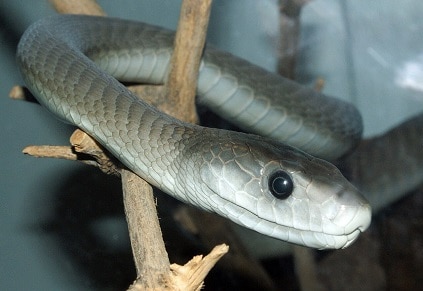
Different snake venoms have completely different specialities. Rattlesnakes tend to specialise in coagulopathy, destroying blood clotting materials so that spontaneous bleeding bursts from all over the body. Then you have snakes like the black mamba, which paralyse you so thoroughly that you become a prisoner inside your own body.
Neurotoxic snakes are found in every continent (except Antarctica) and in some the concentrations are relatively low. These may cause drooping eyelids, and a feeling of weakness, such as the asp viper of France. But then you have horrors where neurotoxins are virtually all they contain. The black mamba is infamous for causing no swelling or necrosis at the bite site, just a nice clean wound. Jack Seale was one herpetologist who fell victim to a black mamba, after loosening his grip for a fraction of a second in a lab. Seale injected himself with antivenom within minutes, before fading away. When he awoke, he was in a hospital bed, completely paralysed. He could hear and see, but was totally immobile, unable to move even his little finger.
Wracked by fear, Seale listened to the doctors discuss how he was probably a braindead vegetable, and whether they should pull the plug. After 8 days, Seale managed the tiniest twitch of his little finger. It took weeks until he was able to leave hospital. Only his wife’s begging prevented the doctors from turning off his life support.
| 2 | Countless unique toxins |
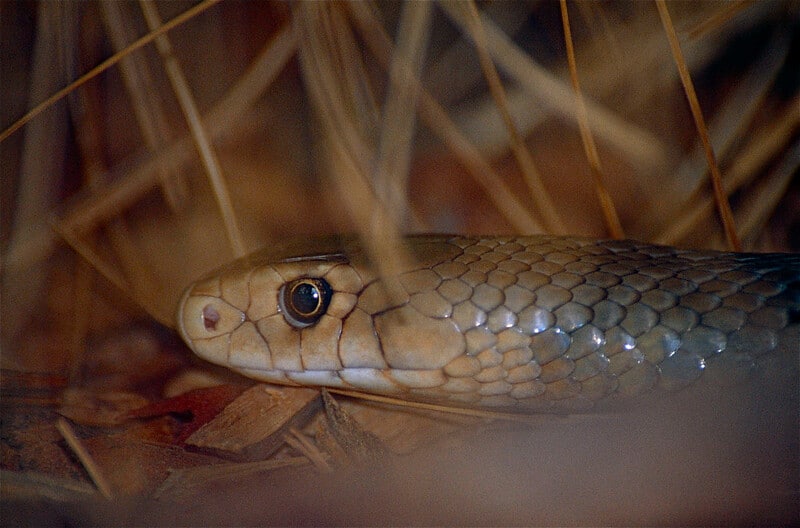
Across the snake kingdom, there are countless unique venom toxins, which are possessed by one or two members of a family, and no other species on Earth. The coastal taipan of Australia is the third deadliest land snake by venom potency per milligram, and one of its pre-synaptic neurotoxins is called taipoxin, which is directly responsible for the venom’s respiratory paralysis. Taipoxin is considered to be the single most powerful snake neurotoxin, but appears only in the 3 member taipan group (also including inland taipans).
New unique venom toxins are being discovered constantly, like nigroviriditoxin, found in the black speckled palm pitviper of Costa Rica’s mountains. This has myonecrotic powers, eating away at muscle tissue beneath the skin. Clark’s coral snake (also found in Costa Rica) contains the rare neurotoxin clarkitoxin, comprising 16.1% of the venom.
Rare toxins are often named after the species itself. For example, the eastern brown snake (Pseudonaja textilis) contains textilotoxins, while tiger snakes (Notechis scutatus) churn out the neurotoxin notoxin. Some toxins are more widespread, like crotamine, a muscle-shredding myotoxin found in numerous rattlesnakes.
| 3 | Even babies are dangerous |
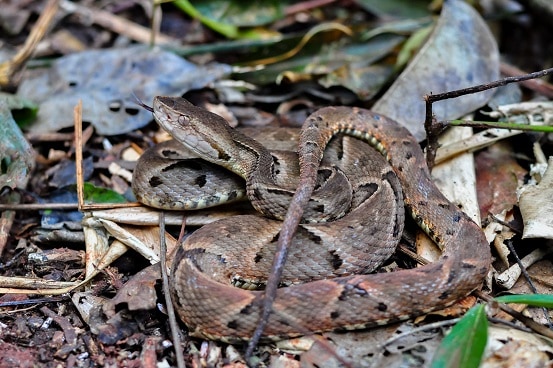
Unlike a human baby, snakes aren’t helpless when born. They don’t crawl around a small area feebly, swallowing whatever insects they can, but are equipped with a dangerous array of toxins from day 1, even in the first minute of their life.
What’s more, many snakes are deadlier as youths compared to adults. Bothrops moojeni is a 1.6 metre species of southern Brazil, found in thick riverside forests. As an adult, its venom consists mainly of metalloproteinases, which destabilise skin cells, but as a youngling, haemotoxins dominate. The same is true for Mexican lance-headed rattlesnakes, which are twice as abundant in neurotoxic PLA2s as newborns, before graduating to metalloproteinases. It’s theorised that as younglings have a small venom yield due to their lower body size, each milligram needs to be extra efficient in disabling prey. As an adult, the balance sways towards metalloproteinases being beneficial, as these physically dissolve organic matter and therefore pre-digest larger prey.
Interesting, most of these shifting venoms are found in the viper family. Remember that a baby snake is no safer to stroke than an adult.
| 4 | Strange symptoms |
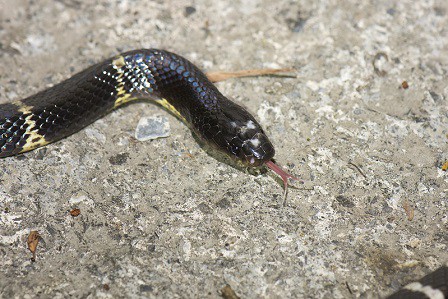
Spontaneous bleeding and tender swelling are widespread in the snake kingdom, but with each toxin soup being slightly different, some snakes have more unusual symptoms.
One of the weirdest is the Saharan horned viper. This 40-60cm sand dune surfer has a mortality rate of 3%, and one early symptom is a feeling that your heart is being squeezed in the palm of someone’s hand. A black mamba’s bite can be felt within 10 minutes (possibly killing in 20 minutes), and the early symptoms include blurred vision and a metallic taste in the mouth. With up to 100 toxins in some venoms, there’s plenty of room for bizarre effects that aren’t necessarily deadly.
The many-banded krait of Hong Kong has a more menacing one: it causes all the muscles over your body to ache agonisingly, as though you’ve just cycled up Mont Blanc, or completed the workout session from hell. There’s no escape from this ache except the swift administration of antivenom, or waiting patiently in a hospital, clenching the sheets with your firsts. Many-banded kraits cause numerous bites annually in Hong Kong.
| 5 | Over 50 rattlesnakes |
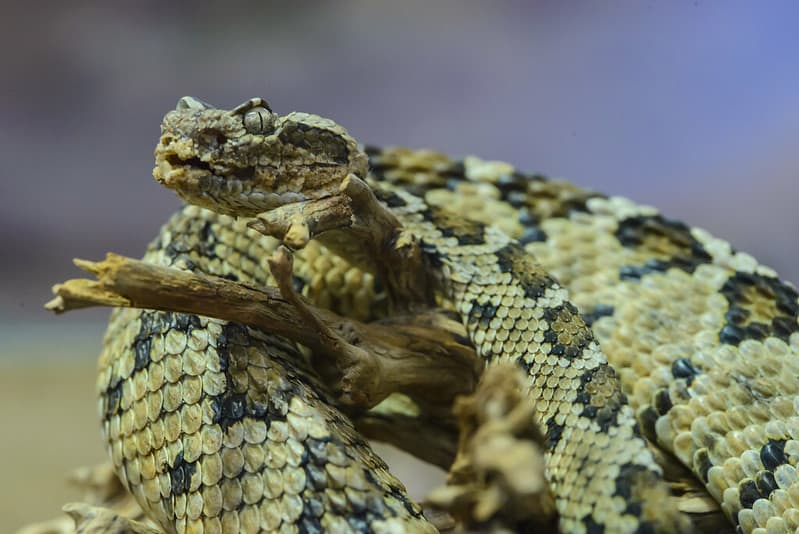
The rattlesnake genus (Crotalus) ranges from southern Canada to northern Argentina. Millions of years have passed since their primitive viper ancestors crossed the Alaskan land bridge and filtered southwards. Over time, groups broke off and went their separate ways, settling down in a variety of ecosystems. The landscape began to transform them, until we reached the modern situation, where at least 52 rattlesnake species are confirmed to exist. The US has at least 15, while Mexico (the rattlesnake heartland) has over 25. South America has just 1 – the South American rattlesnake. There’s endless styles, with some like sidewinders inhabiting parched deserts, and prairie rattlesnakes inhabiting the Great Plains.
Danger levels are another variant. Tiger rattlesnakes are severely neurotoxic, severing all brain muscle connection, while timber rattlesnakes are haemotoxic and trigger spontaneous bleeding. Querétaro dusky rattlesnake are timid, while Tancitaran dusky rattlesnakes are especially nervous and irritable.
New species are being discovered to this day. Since 2000, most have been former subspecies which turned out to be far more genetically distinct than thought, like the Tzabcan rattlesnake (Yucatan peninsula) being split from the Central American rattler.
| 6 | Sea snakes are worst |
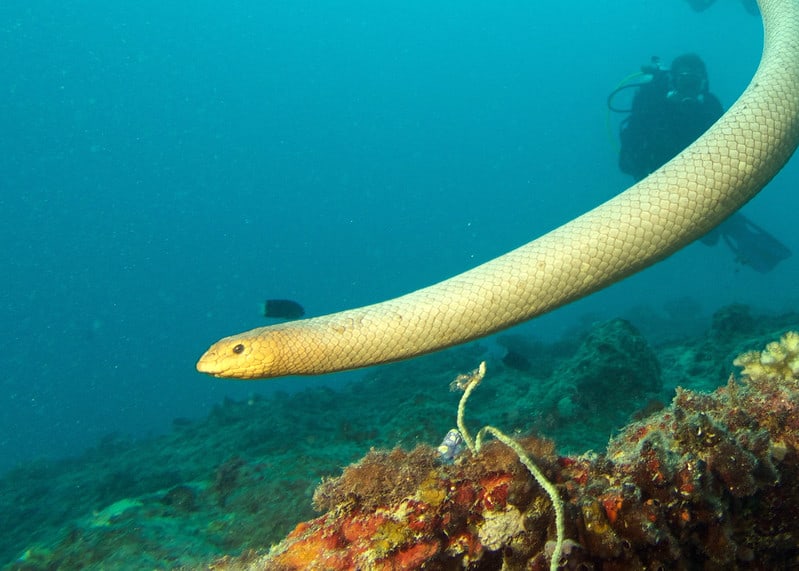
Coral reefs may look beautiful, but they also harbour some of the deadliest snake venoms on the planet. While the Australian inland taipan has the absolute most potent venom, sea snakes may consistently be the strongest. Banded sea kraits have an LD50 rating of 0.4mg, and olive sea snakes score 0.22mg, versus 2mg for the far more terrifying cottonmouth. Ratings below 1mg are ordinary for sea snakes, and furthermore, their venom specialises in neurotoxins, severing once reliable brain signals and causing total paralysis.
Luckily, there’s a counterbalance – sea snakes generally have a very low venom yield, typically 2-10mg. It makes sense in a watery environment, as they mainly prey on fish, which rapidly dart away. An overwhelmingly neurotoxic venom disables fish within seconds, allowing the sea snake to seize them and return to their colourful coral reef hideyhole.
The largest sea snake family Hydrophis evolved from the Australian elapids 10-20 million years ago, and took their already neurotoxic venom a step further. Deaths are confirmed, particularly with the beaked sea snake, an aggressive species found on the Indian coast. Overall though, these highly venomous snakes are redeemed by a calm personality. Sea snakes rarely bite tourists or scuba divers, probably because we don’t naturally live alongside them, and therefore they don’t recognise us among their colourful cast of coral reef characters.
| 7 | Many venoms have no cure |
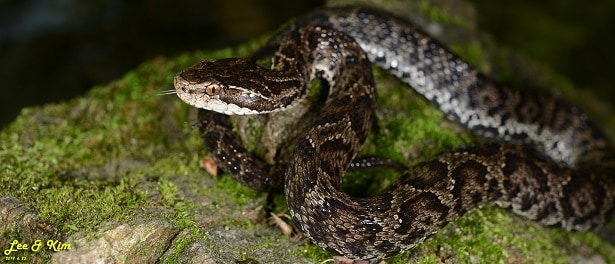
The Chinese cobra is the deadliest snake in its namesake land, targeting internal organs like the kidneys, but every hospital stocks the tailormade antivenom. With a handful of vials administered within hours, you’ll be back on your feet within days. But there’s also dozens of venomous snakes out there in the wild with no antivenom at all.
Africa is a particular hotbed of snakes with no cure. Creatures like Atractaspis burrowing asps cause severe necrosis, yet there’s no tailormade antidote once you stagger into hospital. The southern vine snake also has no specific antivenom. It lives in bushes 1-2 metres above ground, and when scientists tested black mamba antivenom, in a 13 year old bite victim, it had no effect at all.
Then there’s new snakes, which nobody knew about, meaning no pressure to make antivenom. Some such as the Tsushima Island mamushi (Japan) inhabit too small an area to make production worthwhile. In a 2011 study, the antivenom for Japan’s widespread mamushi was surprisingly weak against its Tsushima island relative. There’s many snake families which do have a sizeable overlap in toxins – the antivenom developed for coral snakes often works across many species. But other snakes are out on a limb, on a weird branch of the toxin evolutionary tree.
| 8 | Highly accurate spitting |
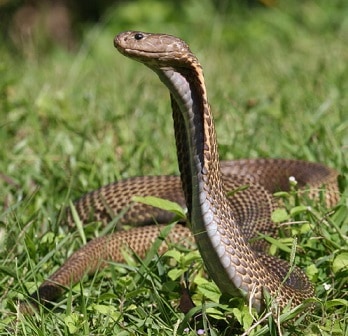
A traditional cobra is already one of nature’ worst creatures to bump into. They combine a lethal venom with agility and aggression, lunging at intruders with manic speed. Nevertheless, there is something worst: the spitting cobras.
These number 10-15, and belong to the main Naja family of true cobras (unlike the king cobra). They not only possess the usual cytotoxic venom, but tiny holes in the bottom of their fangs, located on the front a couple of millimetres upwards. This forces bursts of venom through in pressurised jets, aiming for any spitting cobra’s number one target: the eyes.
In 2005, scientists walked heroically into a room containing 10 spitting cobras, and proved that their senses for eyes are extremely accurate. The scientist wore transparent goggles filmed by a high tech video camera. She made sure to move her head sharply, then stay still and move her hands. All the cobras aimed for her eyes, and not for her flailing hands. Her goggles were dripping by the experiment’s end, and the spitting cobras could also distinguish between living and false humans, as they rarely spat at an image of a face on the wall. When they did, they were still deadly accurate.
| 9 | Unexpected dangers |
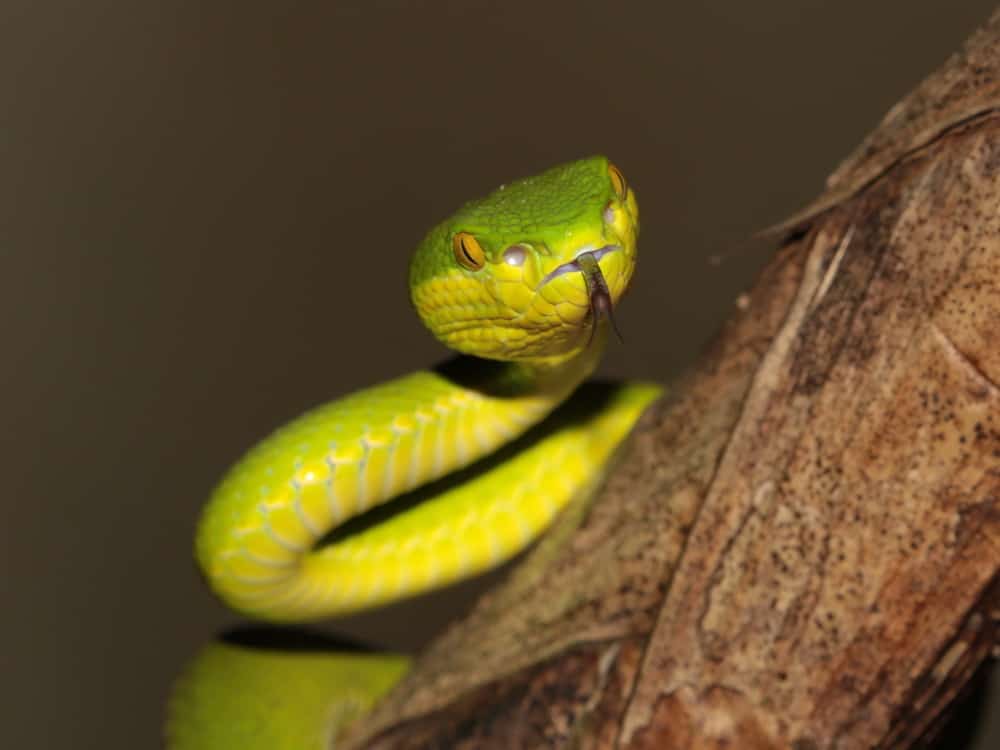
According to John Wayne’s western catalogue, a rattlesnake bite is best solved by sucking the wound dry, spitting onto the desert floor, and riding off into the sunset. Never do this. Your mouth is just as vulnerable to cytotoxic venom and its intricately arranged toxin arsenal. For example, one victim attempted to suck his wound dry after being attacked by a white-lipped pitviper (common all over Thailand). Within hours, his gums and tongue were severely swollen. This does at least prove that venom was removed from the bite, but it probably isn’t worth it.
While very few venomous snakes truly wish to bite humans, their own natural instincts can exacerbate things. The Shadao Island pitviper loves trees, but its natural response when spooked is to drop out of branches. This brings them into the arms of humans, spooking them even more, triggering a bite.
As if venom wasn’t bad enough, a snake’s mouth can hold colonies of malicious microorganisms, which can infect the bite wound. Some species are worst than others, like the Chinese cobra, whose mouth is swarming with Morganella morganii and Enterococcus faecalis.
| 10 | Non-venomous yet aggressive |
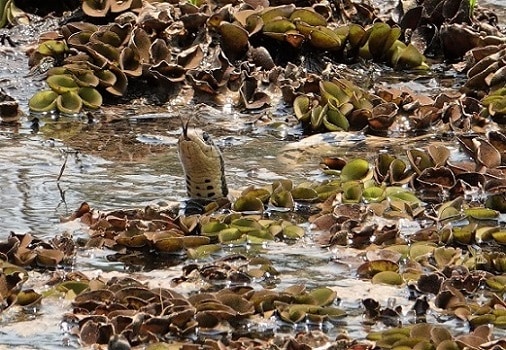
The world of snakes isn’t divided into venomous and non-venomous. Some are peaceful river lovers which sit and watch lilypads float by, but another 200 species are easily angered, and likely plotting new ways to bite you at this very second. The Brazilian smooth snake is a 3 metre non-venomous species which rules Amazon rainforest rivers, fearing only anacondas. They’re a volatile snake which might swim away or play dead, but also leap forward and bite you with all its savage strength. The ladder snake of Spain is another species to never underestimate. They’ll normally slither past calmly, but pick one up, and they’ll commence biting and tearing at your hands with a fury.
Another tricky character is the banded kukri snake of Thailand. This species prefers peace, but has razor sharp teeth, which can slash your skin effortlessly with a few sideways head tilts. Kukri snakes were named after the curved knives wielded by Nepalese Gurkha soldiers.
In reality, all snakes are just trying to live their life, and will only turn vicious if threatened. However, whether they’re genuinely threatened and whether they feel threatened don’t always coincide.
